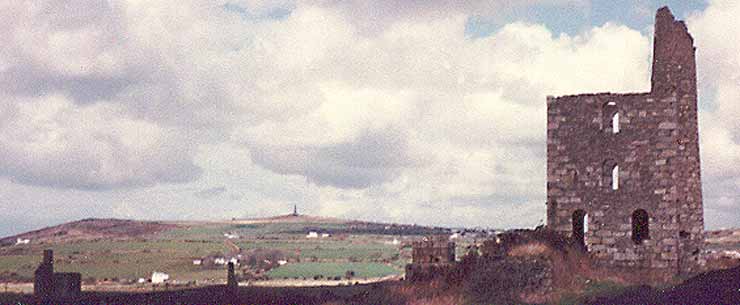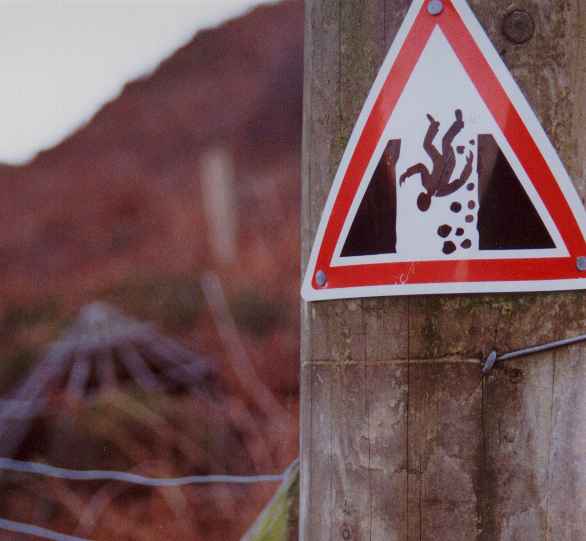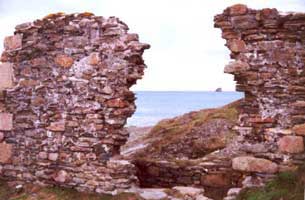Cornwall: Mines and Engine Houses

|
|
Wherever you go in Cornwall you will find an engine house. Tin and copper have been mined in Cornwall from ancient times. In the eighteenth century inventors like Boulton and Watt developed steam engines which could raise the tin and copper ore to the surface. Later and more sophisticated engines broke up the ore, raised and lowered the miners, pumped water from the face, and ran the 'shaking tables' that refined the tin ore. This picture is of the Grenville Mine at Troon, near Camborne, looking over Carn Brea. This is the landscape I grew up with. The derelict engine house in the foreground is a 'stamps engine', used for breaking up the ore. Below, in the valley, can be seen the outlines of other engine houses: 'pumps', 'whims', and 'man engines'. Pumps for pumping water out of the mines, man engines for raising and lowering the miners, and whims for doing the same to the ore. At one time this mine employed hundreds of men and women, and added to the wealth of the ancient Grenville family. However, the monument on the hill behind is to the Bassett family, another local mining family, but these were an upwardly mobile lot, who took the name of De Dunstanville when elevated to the peerage in the nineteenth century.
|
|
Here is the Grenville stamps engine from another angle. In the foreground lies wreckage of the modern age: an old washing machine, car parts, and the contents of a black bin liner. The Cornish do not always see their heritage as picturesque. But the old mine workings are themselves dumps. Under the brambles and gorse lie piles of waste, great mounds of low grade unprocessed ore containing tin, copper, tungsten, arsenic, and uranium. When the mines went bust in the 1920s no-one had the inclination - or the cash - to clean them up. Visitors to the old workings can find an astonishing range of minerals and, indeed, the geological collections at the Royal Cornwall Museum and the Camborne School of Mines are among the best in the world. But visitors to the old mine workings should be cautious: some of the minerals are poisonous, and there is always the danger of uncapped, forgotten mineshafts.
The Grenville mine is at Troon. Past and present Troon residents, and those who wish to know more, should look at: http://www.troonexiles.net for more information on this quintessentially Cornish village.
|

|

|
In recent years it has been realised that mineshafts represent a danger to man and beast. Many, like the one visible behind this warning sign, have been capped, but the location of many others remains unknown. Few people have fallen into disused mineshafts, but there have been frequent incidents in which large animals, in particular cattle, have disappeared underground. On occasion, mineshafts have opened up randomly. I remember that in around 1980 a 200 foot shaft appeared quite unexpectedly in a front garden in Tehidy Road, Camborne. There are many places in Cornwall where caution is advised: the whole county was once an industrial workshop. Parts might now be an industrial museum, but not a museum where everything can be predicted.
|
|
At Pool near Camborne there are two working engines which can be visited. Most mine workings are left to fall into disrepair. Here, at Blue Hills near St. Agnes, the buildings reach almost to the water's edge. This also means they take a battering in every storm. Nothing much is left but for a few walls overlooking the ocean. The same could be said for the Cornish tin industry. Just a few years back there were working mines - South Crofty, Pendarves, Wheal Jane, Geevor. Now all have closed.
|

|
* This page last updated 29 August 2003 *
|



